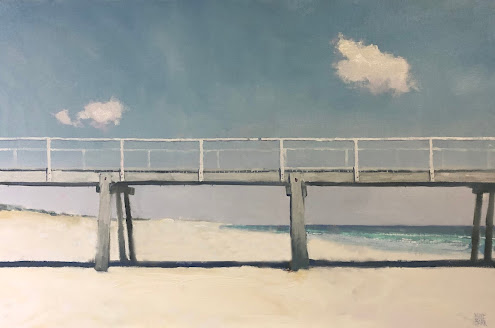Not that long ago during the opening of one of my exhibitions, I had an interesting conversation with collectors that I had not met before. They bought a piece some years ago along with other artworks and recently they had redecorated their house to match the art they own.
This was a revelation to me and indeed I had not heard of that type of thing before. Often art is bought to match the décor – a legitimate reason for buying art and it is what interior designers specialise in. There is nothing nicer than paintings that complement their surroundings.
Changing the décor to match the painting is another world and it indicates is that artwork can be more precious than a roll of wallpaper with some artworks living through a lifetime of redecoration.
The artwork mentioned above was be all accounts not the home décor kind, so to decorate a house to go with it is really something special. It elevates a painting above the roll of being a decoration and indeed there are many works that come under this category.
Painting that are purely for décor are rightly subservient to the needs of the decorator – their roll is a supporting one to make a house look nicer. However, other types of work that does not come under the ‘wall art’ banner have other reasons for hanging in someone’s house.
There is the sentimental aspect of art too. This is more about the pull-of-the-heart, than thinking about the curtains. Things like places, people and other specific types of subjects can capture the imagination of viewers and the pull can be so strong that they have a need to own it.
Even though artists may have thoughts and stories about their work, viewers can have their very own stories about it. It could be that it triggers a special memory and this reason alone is popular with buyers. It is an amazing experience for an artist to know that one of their paintings has touched the heart of someone else, even if they didn’t buy it.
Art that is bought for sentimental reasons is likely to become a life-long friend of the family that will live through the ups and downs of a household, often through generations. In a way such works become little anchors for the soul in the some-times turbulent sea of life. Paintings that we can enter into, can take us away when we need to.
So, the reasons for buying art is not all that difficult to understand, it is loved because is perfect for the home décor, it is loved because of it has touched our heart or it could be one of those other pieces that acquired as an investment. Any of those will make an artist happy!
What’s your take on all of this? Drop in your comments below.
Mike Barr





